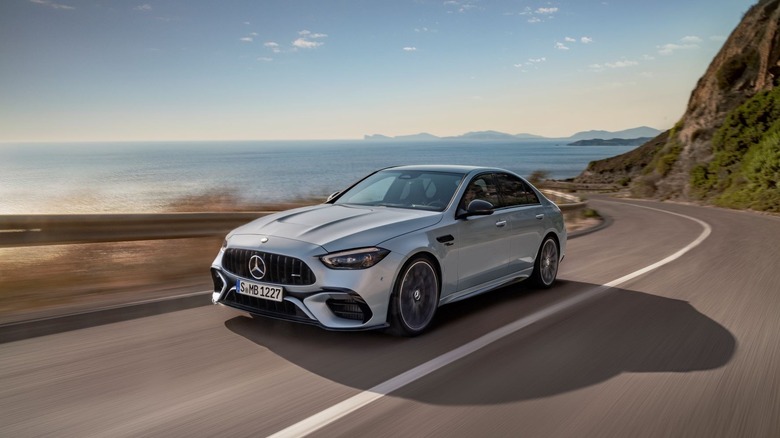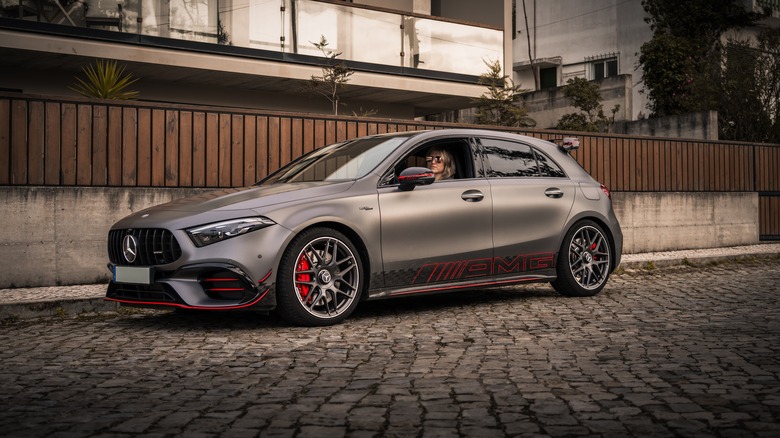Why This Engine Is Considered The Worst Mercedes Ever Made
Mercedes-Benz. Easily one of the most beloved luxury car manufacturers. There has always been a level of sophistication that comes with the German automaker's name. Perhaps it's related to the exceptional quality of its vehicles, whether that'd be an affordable classic Mercedes-Benz like the 190E and C 300, or one of the company's more recent models, such as the effortlessly good 2025 GLE 450e 4MATIC.
Mercedes-Benz has been around for more than a century, which means it has had time to perfect its craft. While this is true, as evidenced by many of its vehicles and parts, the company has, unfortunately, had a few misses in its 100-year run, and the inline-four turbocharged M139 engine proves this.
The M139 is widely regarded as the worst engine Mercedes-Benz has ever produced, and for an interesting reason. Although the engine received stellar reviews for its performance and fuel efficiency, a glaring issue emerged when it was revealed that it would be featured in what would end up being the C 63 AMG E Performance.
You see, while Mercedes often used inline fours in many of its vehicles, including the C-Class, many of the AMG models featured V8s. People had already noted that the M139 came with four cylinders instead of eight, and was part of a hybrid system meant to bring the AMG C 63 to life. As expected, the backlash was one for the books, even prompting Mercedes-AMG to reconsider its decision. Let's examine why the M139 failed to connect with many.
It can't replace a V8
The M139 was developed by AMG and released in 2019 alongside Mercedes-Benz's AMG 45 models. Right off the bat, the engine boasted great features, including variable valve timing for better power delivery, improved air intake efficiency, and better cooling for the turbocharger, thanks to its reverse-mounted design, and reduced weight due to aluminum crankcases and forged pistons.
Additionally, it utilized a combination of an electric water pump and a larger intercooler for significantly better cooling, alongside AMG's Performance Exhaust system that offers a select amount of engine sounds in accordance with the driving mode.
In its first iteration, the M139 was rated at 421 horsepower. However, this value saw a slight increase in the 2025 Mercedes-AMG C 63, with the engine by itself putting out 469 horsepower. With the entire hybrid system working full force, the C 63 could push out an impressive 671 horsepower and 752 lb-ft of torque.
These numbers are impressive, to say the least, especially considering that the main component handling most of the work is just a 2.0-liter engine. However, even the objectively impressive performance couldn't change the fact that, in the case of the AMG C 63, the M139 is simply not a V8.
The M139 failed to find its place among AMG fans
Before adopting the M139 engine, the AMG C 63, and most other AMG 63 models, used the M177, which was a high-performance, turbocharged 4.0-liter V8 capable of producing 469 horsepower in its base form, and 630 horsepower in its most powerful form. While the performance was indeed good, the engine was riddled with several issues, from oil leaks and carbon build-up in the intake valves to cooling system issues, turbocharger wear, and high-pressure fuel pump failure, just to name a few. The M139 has yet to show any major issues on a large scale, though one of the main reasons for that is that it's still relatively new.
Regardless, fans have been adamant about what they want in their AMGs, and Mercedes-AMG is seemingly listening. The company announced that it would be doing away with the inline-four in favor of V8 and inline-six engines. It revealed that the main reason for the shift is not that the M139 is an underpowered and unreliable engine, but rather that it failed to find its place among the company's traditional customers.


